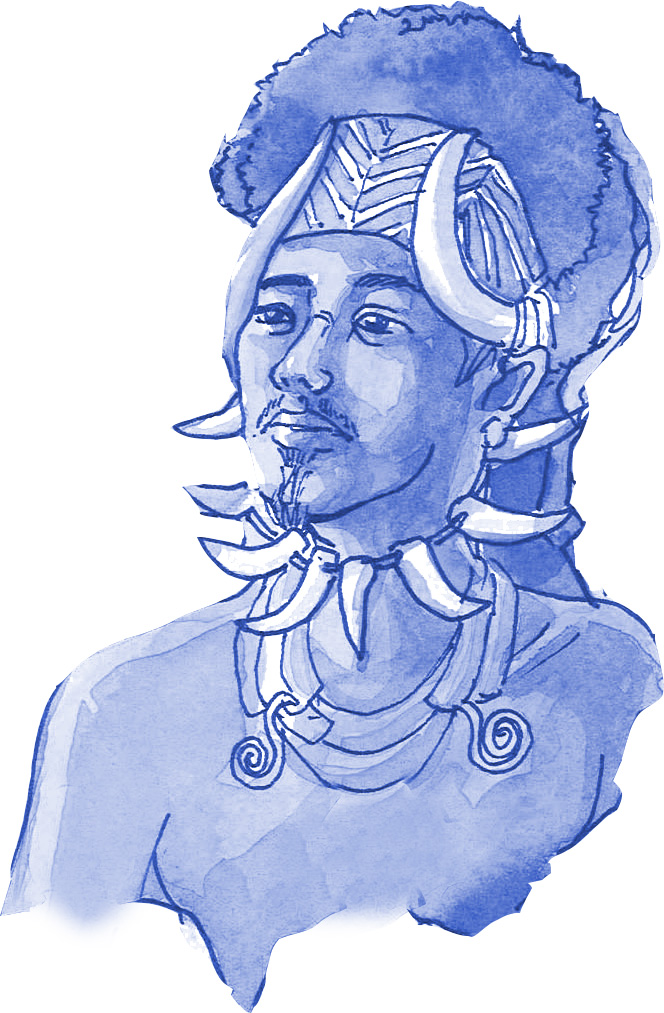This learning resource focuses on five specific minority groups:
- Ethnic and indigenous minority groups
- Religious minority groups
- Stateless persons
- Persons with disabilities
- Sexual Orientation and Gender Identity and Expression (SOGIE) minority groups
Some of these groups might not traditionally be considered minority groups under international human rights law. Nonetheless, they all share the same four common characteristics of being a minority group. In addition, each of these five groups has their own specific interests and needs, which are often very different from each other. However, in each of these five groups, members might have diverse and even contradictory interests and needs. Consequently, it could be difficult to identify an interest or need that all members of the group may agree on
အမျိုးသားရေးဝါဒီ
လှုပ်ရှားသွားလာနိုင်မှု
အမွေအနှစ်
ကိုလိုနီဝါဒ

1.2.1
Ethnic and Indigenous Minority Groups
Preview: When you hear the words ‘ethnic’ and ‘indigenous’, what do you think of?
There is no one universal definition of what an ethnic group is. People form their ethnic identity based on things like traditions, culture, language and ancestry. In this learning resource, an ethnic minority is a group that self-identifies with a particular ethnic identity and has fewer members than the ethnic majority group.
There is no one universal definition either of what an indigenous group is. The UN, in Minority Rights: International Standards and Guidance for Implementation (OHCHR 2010:2-3), recognises that both ethnic groups and indigenous groups have common characteristics:
- Having traditional cultures and beliefs that are distinct from that of the majority group
- Being determined to maintain their traditional cultures and beliefs
However, the UN also recognises that indigenous groups have additional characteristics:
- Forming a non-dominant group in society
- Being descendants of the people who lived in a certain territory before colonisation or the creation of a country with borders
- Having traditional social, economic and political systems that are different from those of the majority group
- Being determined to maintain their traditional systems
- Having strong bonds, which may be spiritual, to their historical territory and its natural resources
- Often believing that their social and cultural survival relies on their historical territory and its natural resources
In this learning resource, an indigenous minority is a group that self-identifies with a particular indigenous identity and has fewer members than the majority group. The UN considers indigenous groups to be distinct from other minority groups and has therefore granted them special protection and rights.
Even if the UN recognises both ethnic and indigenous groups as distinct, these terms are unclear and there are some disagreements over them. Some people argue that ethnic identity is sometimes conflated with other parts of a person’s identity, such as language or religion. For example, people might get classified into a particular ethnic group simply because they share a language or religion. Classification of ethnicity is common in a census. In a census, different groups of people are often classified into distinct categories of ethnicity, and sometimes a person is only assumed to belong to one ethnic identity and not multiple ethnic identities. These categories are often assumed to be easily identifiable, different from each other, and fixed so that they do not change over time. However, in reality people might self-identify differently and might have their own personal understanding of what their ethnic identity means. The differences between groups might also be much more blurred and identities may also change over time.
Indigeneity may be hard to establish because it can be difficult to determine what groups first lived in a geographic area. Therefore, there may be disagreement among groups about which groups can be classified as indigenous and which groups can claim a particular territory as their lands. Disagreement about indigeneity can lead to some groups having less protection under the law and fewer rights.
A group may identify itself as an ethnic minority, indigenous minority or both. This may depend on how the group sees itself and the political environment.
A group might self-identify as an ethnic minority group within their country, but as an indigenous minority group when in contact with the international community, to be able to claim indigenous group rights. A government might classify a minority group as only ethnic, not indigenous, to avoid recognising indigenous group rights to its members.
A group might instead choose to self-identify with a term different from ‘ethnic minority’ or ‘indigenous minority’. They may self-identify as an ethnic or indigenous group, but choose to not self-identify as a minority group. One reason for this might be that the government does not use the term ‘minority’ when referring to these groups. Another reason might be that the group feels like the term ‘minority’ has a negative meaning. The classification of groups as either ethnic or indigenous groups, and as minority groups, is often a very political action.
Activity:
We are all members of ethnic groups, but not all of us are members of indigenous groups, and some of us are members of ethnic minority groups.
Reflection/Discussion
Do you think it is useful and important to classify persons based on ethnicity or indigeneity? Why or why not?
အမျိုးသားရေးဝါဒီ
လှုပ်ရှားသွားလာနိုင်မှု
အမွေအနှစ်
ကိုလိုနီဝါဒ